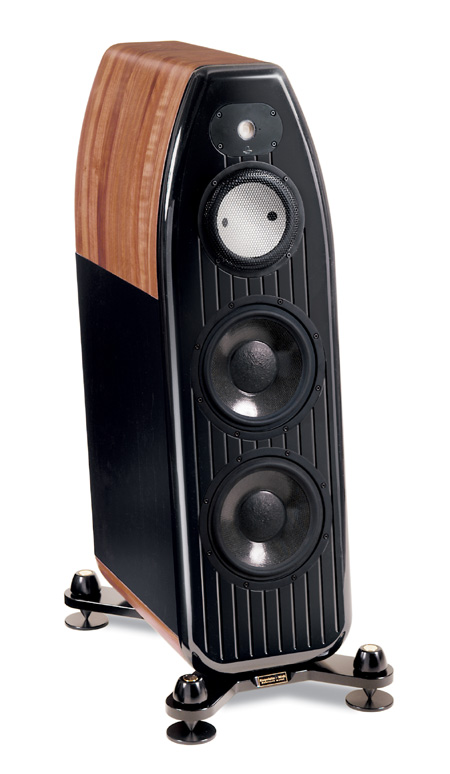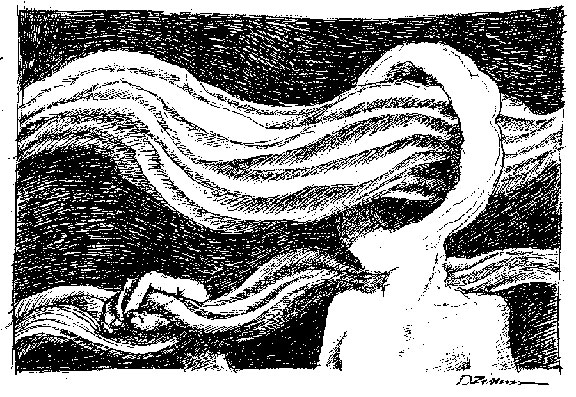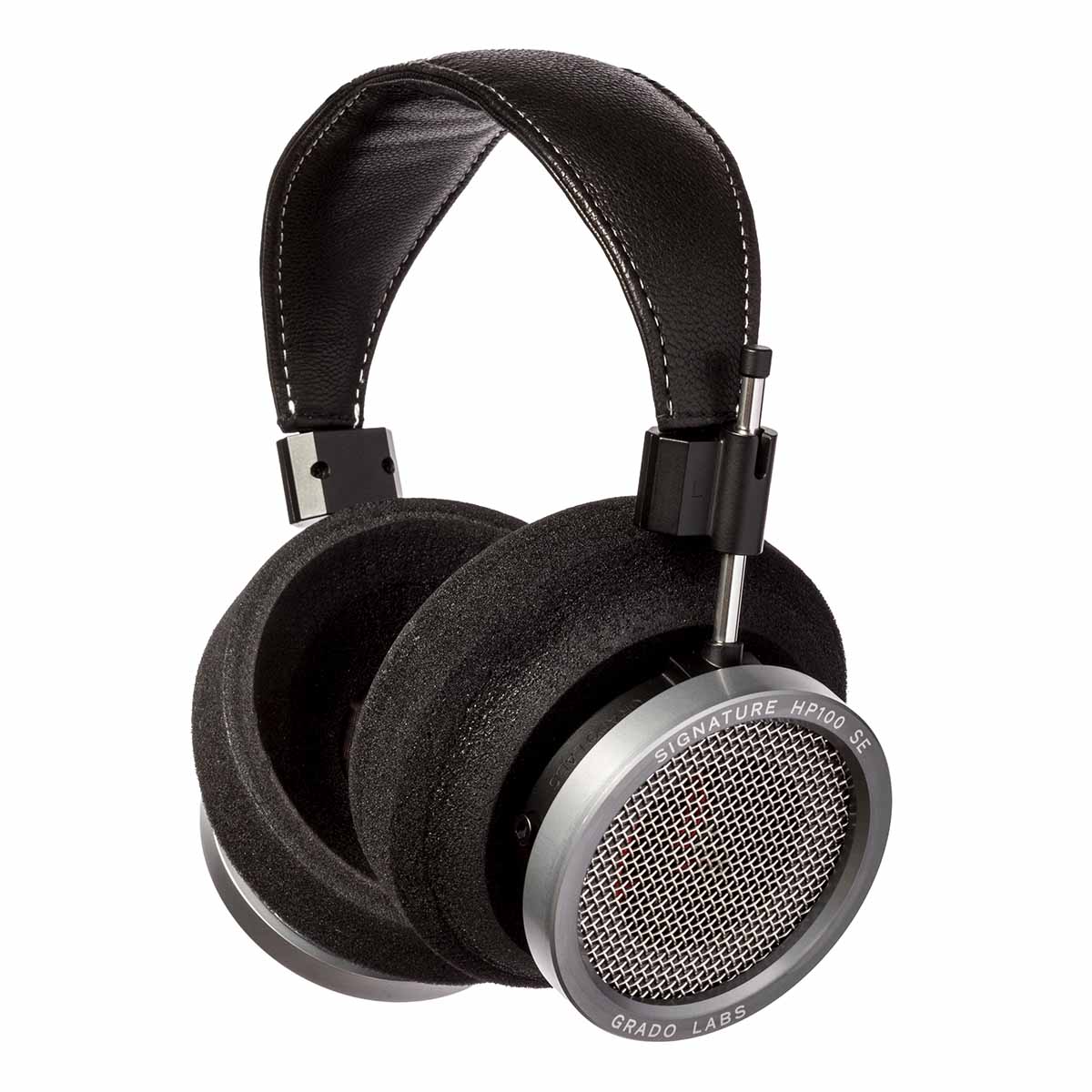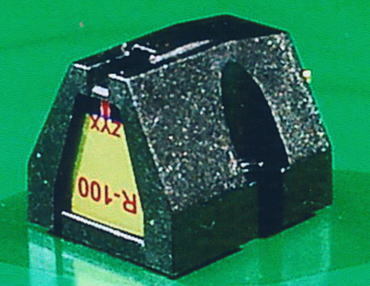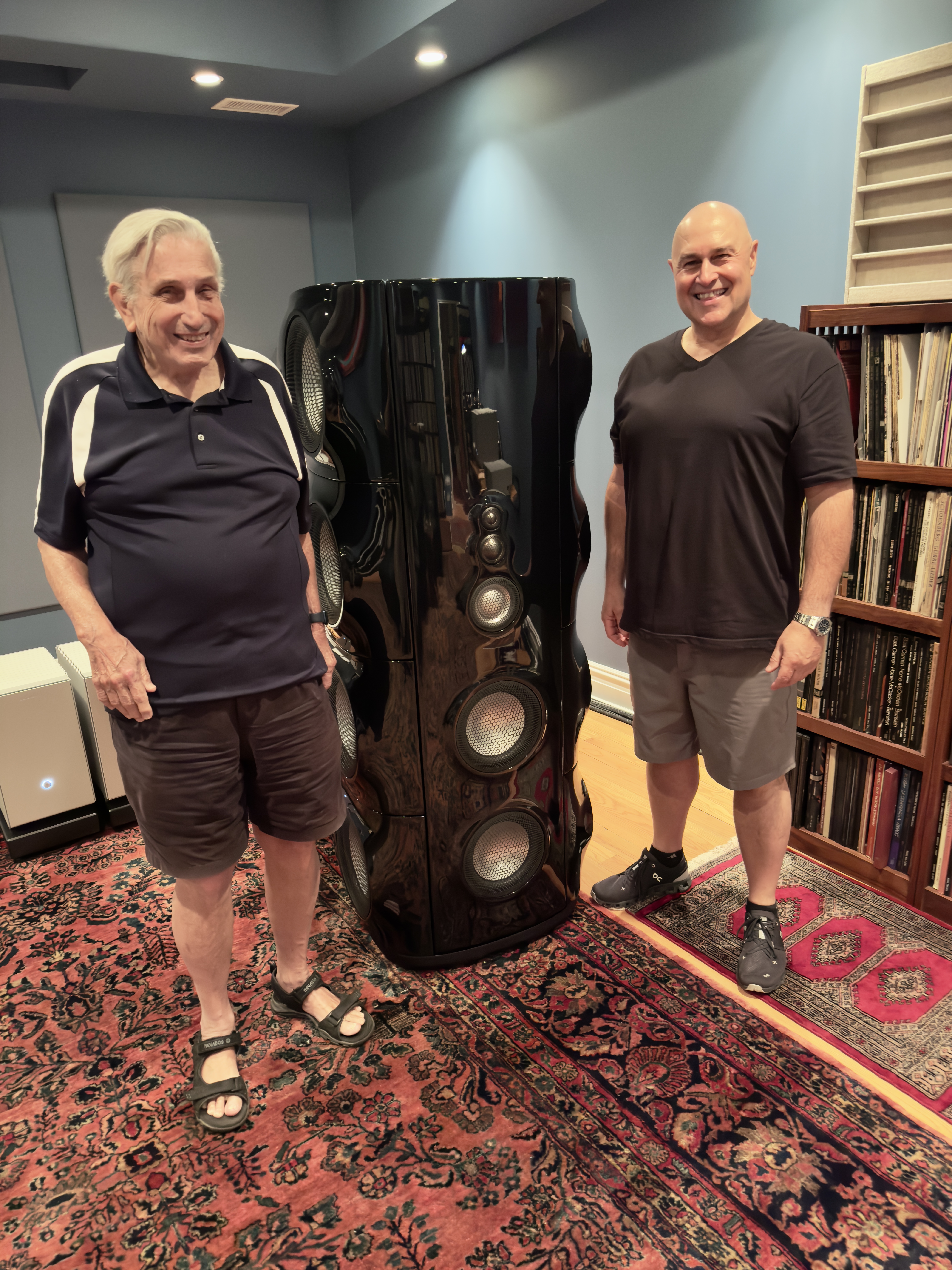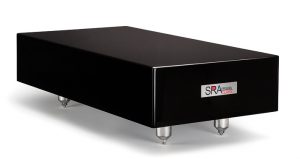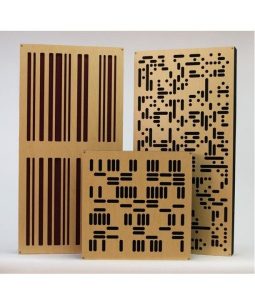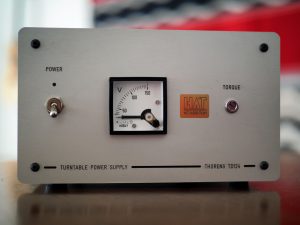This article, by Doug Blackburn, originally ran when Positive Feedback was in print - Vol. 6, No. 4, 1997.
There is so much stuff going on here lately I'm beginning to think I could write a 1-man magazine. But that might not be as interesting as PF's Assembly of the Diverse so I'll compress my thoughts using A(udio)PEG algorithms. My heart leaps and palpitates with anticipation at the opportunity to trade literary effulgence on the deep philosophical issues discussed in the last couple of issues of PF... but I don't think DR will give me 30 pages in this issue. Something is going to have to be cut. Will it be literary effulgence or the usual stew of tweaks, hardware and music? I'll just flip Susan B. Anthony here and see what you're going to get this month... she goes up, flipping quickly, hesitates at apogee still flipping, falls, tumbles into hand and comes up heads. {A cheer rises from thousands of PF readers!}
Let's Jump Right In - Clamp Racks
Since the results of experiments with a single component Clamp Rack were so positive (last issue of PF), I decided to (finally) jettison the marble and cast iron table I had been using as an "equipment rack." I installed a couple of Clamp Racks in the equipment closet. It takes a week or so of experimenting to zero in on the right (light) clamping pressure and shelf nut tension. After that you are rewarded with more silence and transparency, improved bass definition and extension, detail that is more audible due to reduction in haze, and more silent background. Highs are more natural because of removal of significant amounts of "electronic haze." There is also a sense that the highs have been freed from a restraining force that was preventing them from fully developing. In gizmospeak, the highs were freed from bondage and flowed free and unrestrained with total latitude of libidinous attitude. Things were getting VERY interesting, soundwise.
Both the 4 component Clamp Rack and 2 component Clamp Rack were equipped with an additional top shelf for unclamped components. The turntable found its new home on the top shelf of the carefully leveled 2 component Clamp Rack. I used threaded AudioPoints screwed into threaded brass inserts in the bottom plinth of the turntable (Roksan Xerxes with SME V). This sounds a lot better than the dedicated Roksan mini-Lead-Balloon-style stand.
After completing the conversion from marble & cast iron table to Clamp Racks, I had to just stop doing other things for a while and sit back and enjoy the newfound "quality" the system had. Everything sounded better, more sophisticated, elegant, refined. I was stricken with bouts of irresistible desire to consume impolite quantities of Dom P. & beluga caviar while lounging in a natty silk smoking jacket with contrasting ascot. To hear "racks" make this kind of improvement in musicality and sheer enjoyability was quite an education for me. I went through that little bit of ecstasy you get when something really good happens to your system. You pull out more CDs or LPs than you possibly have time to listen to every night. Eventually you settle down and begin an enjoyable and relaxed give and take. Sounds like a relationship with an inanimate object, doesn't it? We are the afflicted.
What about the brass bottom cones replacing the steel bottom cones that are "standard" on Clamp Racks? What about brass shelf nuts versus the stock steel shelf nuts? I was told that the brass shelf nuts were a cosmetic upgrade only. But Robert Stein said that brass bottom cones replacing the steel bottom cones would be a significant sonic upgrade. Putting the brass bottom cones on the single component Clamp Rack for the main amp resulted in an even more sophisticated sound. Backgrounds became even more silent. Dynamics seemed to get a slight boost and small dynamic contrasts were more clearly identifiable. Delicate things were presented with a new degree of rightness, subtlety, and hold on to your hats... tenderness.
The JustaRack series uses the same parts as the Clamp Rack series but you do not clamp components so there are fewer shelves to pay for. You could, in theory, begin with a JustaRack (or two) to hold your equipment. When you accumulate a little more cash, you could put three 1" brass AudioPoints under each component for a nice improvement in sound quality. Next you could order additional shelves and one more 1" brass AudioPoint for each new shelf you add. This would make the original JustaRack into a Clamp Rack. Each step produces a sound quality upgrade. If you take this route, be sure to discuss this with the dealer or Ultra Systems before buying. You have to make sure the threaded rod legs are long enough to hold the additional shelves and clamped components. The threaded rod legs will be longer than necessary for a "normal" JustaRack.
Room Tunes - Con-tune-uous Improvement
If you recall from last issue, my room has unusual 45 degree surfaces in ceiling and wall corners. This made it unsuitable for Room Tunes' normal Corner Tune triangular corner reflection catcher. I had already put up 1 rectangular Echo Tune in each corner, but it was smaller than the 45 degree surface in the corner. I was a little concerned that maybe I wasn't getting the "full" corner reflection absorption a Corner Tune would provide in a room with normal corners. Robert Stein dispatched 4 more Echo Tunes. This permitted full corner coverage by using two Echo Tunes to cover each ceiling corner. It worked... just about doubling the improvement the first Echo Tune per corner brought. After getting this right, some haze was removed, the soundstage became clearer, and imaging dimensionality improved. Improvements were apparent in clarity, intelligibility, and space aspects of the system's sound. But the words don't exactly get at what changed. I'm not sure there is an established audiophile vocabulary to deal with some of the changes wrought by tuning room acoustics. These changes are different from what you experience when swapping components or tweaking your system. Tuning-type changes have not been achievable with any other "stuff" I've tried so far. The closest similar changes came from putting up and taking down wall hangings on the left & right side walls. These were being used to kill the infamous "first side wall reflection" that is typically blamed for 90% of all negative room reflection degradations. Bunk. Those wall hangings at first seemed to be an improvement, but I quickly realized the music actually died a bit when using them. Echo Tunes and Corner Tunes (properly implemented) are wildly better than the sound of the room with "killed" side wall reflections.
With the "primary" tuning of the room complete, I was ready for Phase 2. I was pretty sure this would not be helpful in my room. I was convinced the large-ish room dimensions would overcome any possible advantage the Deluxe Room Tunes would offer. Deluxe Room Tunes are the (usually) off-white obelisks you most likely would assume would be the FIRST Room Tunes product that they would want you to get into. Not so. The Echo Tunes and Corner Tunes are their "intro" to Room Tuning, and I believe this approach is correct.
In most rooms, Deluxe Room Tunes will be soundstage tuning panels. Put them in the front corners of the room aimed at the listening position and they light up the rear corners of the soundstage, draw the width out beyond the edges of the speakers and generally give a convincing sense of the size of the recording's space. Move them back-to-back exactly centered between the speakers so the narrow sides face the listener and they form an incredibly palpable center image at the expense of some of the feeling of width. What is an audiophile to do? You want width AND an incredible center image? Two pairs are just what the doctor ordered. This was another interesting experience to go through. Not only did these work, they moved performance of the entire system up a full notch on EVERYTHING played on it. Don't be tempted to go for the Deluxe Room Tunes first. Follow the "program" and you will be pleased with the results. Deluxe Room Tunes another example of changes you can make to the sound of your system that cannot be achieved by any other means. Your room is a component of your system. Don't ignore it.
For movies, I move the center pair of Deluxe Room Tunes to the rear corners. In the rear they do for the surround channels what the front l & r pair does for the main channels—enhance the sense of unrestricted width and space.
That's it for Room Tuning. I don't ever care to listen to music in this room again without these devices in place. The Echo Tunes (Corner Tunes for normal rooms) and Deluxe Room Tunes have made listening more enjoyable than ever. Things that I'd thought were part of the system's sound turned out to be ROOM issues that were nicely resolved with the Room Tunes products. This was another of those "I don't (wanna) believe it" issues that proves how shortsighted we can be when deciding what the next best thing for the system will be. A new pair of interconnects, a cartridge, speaker cables... better put Room Tuning on the list too because it will do things to improve your enjoyment of music that you can't do any other way.
Qué Surround, Surround... Whatever Will Be Will Be
The Future's Not Ours to See... Blah Blah Blah, Blah Blah
Music-in-surround remained unimpressive until the XLO/Reference Recordings Test & Burn-In CD arrived. Shortly after that the Delos Surround Spectacular CD made an appearance. Both contained Dolby Surround encoded music and for the first time I heard music in surround that was better in surround than 2-channels. Maybe it was the fact that these were both Dolby ProLogic encoded that made the music thing work so well for the first time. My decoder is not a "music processor." It has several other modes (Concert, Matrix, Hall) and has adjustable delay, but it just does not swing with normal 2-channel recordings played back in any surround mode ProLogic or otherwise.
That all changed with the arrival of the new CDs with ProLogic encoding. Incidentally, there was a Chieftains Celtic Harp CD a couple of year ago that claimed Dolby Surround, but it was no more musical using ProLogic than normal 2-channel recordings. In fact, I prefer Celtic Harp played back in normal stereo. Both of the new CDs have impressive musical selections. The XLO/Reference Recordings CD samples the Reference Recordings library. The "Pomp & Pipes" track blew me away — sheesh, music never sounded so good through a Dolby ProLogic decoder. This CD also includes Burn-In and Demag tracks that are surround compatible — run the CD through your surround decoder and get 5 channels of sshshshsshshshshshshshwooowooowooowoooowoooshshshshshsh to accelerate the burn-in process. I was consistently getting what sounded like fully Burned-In wires in half the amount of time the manufacturers quoted if you were just using music as the break-in signal. Being able to demag the entire system in a single pass or two... coooool. If you've ever tried to demag a surround system with a demag device or demag CD track that was stereo only, you will have an immediate appreciation for how effective this new CD is.
If you haven't been convinced that system demag is worthwhile... all I can say is that you aren't hearing your system sound as good as it can sound. Do a demag about every month. It only takes 2 minutes to do (I like 2 passes of the 1 minute demag track). Cost is no longer an excuse. If you thought $90 or $200 was too much for a moving coil demag device and $150 was too much for an electronic demag device you plug in to the preamp (line level), this $29.95 gold CD gives you demag in surround or stereo plus all the other test tracks, the burn-in track and some really good sounding music tracks with ProLogic encoding (stereo compatible). AND the ace in the hole...the external demag devices like the $150 unit do NOT demag the analog section of your CD player or DAC. You can use a demag CD in your laserdisc player, in your car CD player, in your bedroom CD player, in your portable CD player (make that RS 3400 really sing!) — every system benefits. With all the speaker cable and interconnect evaluation that's been going on here lately, this CD has to have saved 300 burn-in hours. Not having to run the system for all those hours probably cut the electric bill enough to save half the purchase price of the CD already. <grin>
Clampzilla
The next experiment-in-surround was putting the surround amp in a single component Clamp Rack. I was expecting this to be either inaudible or so insignificant that you wouldn't want to spend money on it. Wrong. Clamping the surround amp (an effectively modded Adcom GFA-535, original version) was quite audible, thank you. But what you hear after clamping the surround amp is different than what you hear after properly clamping the amp in a good two-channel system. Things like improved resolution, detail, dynamics or space aren't as obvious. NOTHING seemed to jump out after clamping. What did happen was that hairs stood up on the back of my neck. The "realism" of the sound got better but in ways that do not have a direct correlation to what you hear when evaluating a 2-channel music system tweak. The listening room disappeared better. You are sucked deeper into the movie. The echo of der Schwartz's Harley (Terminator 2) as he turns off into an alley sounds just right the first time you hear the "new improved-by-Clamp-Rack" version. It is remarkably like the real potato-potato Harley sound with incredible reverb from the alley. One area that can/does improve in familiar ways is the sound of the "air" in a room, especially larger rooms. This was much better with the clamped surround amp. "Better" in this case meaning the sound of the space was close to what you hear when you are in a similar space—less "canned" or mechanical sounding. I was beginning to think sound recording for movies just wasn't all that good because none of the movies I was seeing/watching were getting this sound-of-air correct. Now I know it was an equipment issue rather than bad recording or transfer technique.
I don't want to bore you with trivia, but remember the brass bottom cones for the Clamp Racks? You think these would be audible when used on the surround amp's Clamp Rack? Brass bottom cones couldn't cause enough of a change to be significant when used on the surround amp's Clamp Rack. But every time I tried the brass bottom cones then put the stock steel bottom cones back, I immediately wanted the brass bottom cones back. It isn't so much a matter of being able to tell you exactly what was better when using the brass bottom cones. It was the realism issue again. With the brass cone bottom feet the improvement from putting the rear amp in a Clamp Rack is magnified. This time I swear I heard more transparency though—the amp disappears much better and the sound becomes even more detached and disembodied from the speakers and room. It's as if the addition of the brass bottom cones pushed the performance level up a couple of rungs and specific differences/improvements became easier to identify. For the first time I notice real improvements in small sounds located in the rear channel. A ticking clock was less amorphous and sounded like the real thing. What had been "ic—oc" became "tick—tock." There really seemed to be sharper edges on the sound.
I almost hate to admit this stuff is worthwhile in the surround channels. It opens whole new vistas of system upgrades and additions that I was hoping to be able to ignore. Video... surround... they are the poor relations of the almighty, all conquering 2-channel high-end system. Not good enough to occupy the same room as your "main" system. What I'm hearing now confirms that there are "powerful forces" out there trying to cram a load of horse hooey down our collective throats. The sound on better laserdiscs is pretty freaking amazing. But a lot of us aren't hearing it because we bought the BS about how video systems and music systems should be in separate rooms and how video/movie sound isn't good enough to spend much money on. Bull-loney. If you did what they told you to do and went out and got a ProLogic receiver and five $150 little box speakers and a $500 "sub-woofer" (really a woofer) and some $2 a foot (or less) wire and you agree that video/movie sound isn't good enough to bother spending more money on... no wonder, you're not close to getting decent surround sound! Listen to some really good MUSIC on that cheap surround system and compare it to music on your main system. Pretty bad isn't it? The video/movie sound is JUST AS BAD compared to what it could be with better equipment.
If I sound like I'm getting a little worked up about this, good. I really dislike campaigns of disinformation. I am not the Answer Man about surround sound, at least not yet. I think I'm just scratching the surface. But already I know how wrong a lot of what passes for conventional wisdom about 2-channel and surround systems is, and how easy it is to be mislead.
What Goes Surround Comes Surround
Last time I described the addition of Vandersteen's VCC center channel and VSM wall-mount rear surround speakers. As I've worked with new wires and further explored getting the most out of these increasingly impressive speakers, I've learned a few things that might be helpful. Let's consider the VCC center channel speaker first. Somehow I completely missed the fact that this speaker is (mostly) open at the rear. This is an intentional design element meant to optimize performance of this speaker in the center channel application. It turns out that Richard Vandersteen found out some interesting things about what happens to center channel sound in ProLogic processors. The design of the VCC compensates for a couple of characteristics of ProLogic sound that make it very difficult to get natural sound in the center channel. Other center channel speakers I've heard often had a pronounced hollowness in the lower midrange and upper bass.
Because of the open back of the VCC (it is covered with grille cloth and APPEARS not to be open at first look) and the realities of near-wall reinforcement, there is a 2-position toggle switch on the VCC. The stated purpose for this switch is "Proximity." In other words if you use a VCC in a setup where it must sit close to the wall behind it, flip this switch to the position where the lower frequencies are a bit attenuated. The additional boost caused by the near wall placement will return flat response. In the other position, bass is not intentionally rolled off. In a system with speakers more than 2' out from the back wall you get more bass. To speed up the driver break-in process, use the switch position where bass is NOT rolled off. This will help limber up the driver and improve the sound quality of the speaker. Once break-in is complete, try the other switch position to determine which position sounds best with your particular setup.
WOARS (wires)
And now... Introducing... In a Positive Feedback return performance... DH Labs Silver Sonic BL-1 Interconnect. You've read about these here and possibly elsewhere. This is another "I-wrote-'em-off" story. This time it was because a $95 woar (wire for non-Texans) seemed unlikely to be anything more than a decent "entry level" interconnect. I won't even keep you in suspense over this one. I am replacing some interconnects in my system with DHL SS BL-1 because the first review pair sounded so good. The wires replaced ranged from 2x to 6x the price of the $95/m-pr Silver Sonic BL-1.
You can "roll your own" also. DH Labs sells bulk wire and their own RCA jacks. The RCAs are nice 5 piece jacks with a solid Teflon insulator. Silver is plated over brass. Gold alloy is plated over the silver. Silver is used to avoid the more common nickel because nickel is magnetic, not a desirable property in the audio signal path. Gold alloy is used because it is electrically the same as gold but harder and less porous. Gold alloy doesn't rub off easily and doesn't allow base metals to migrate through pores to the surface. The bulk wire is only $3.50 a foot! The 20-gauge stranded conductors are made of high purity copper wire with a double-thick "5 nines" silver plating. Insulation is the highest grade of Teflon available. The type of Teflon specified for use over silver to prevent oxygen migration that would let the silver oxidize. There are 2 conductors in a twisted pair. Twisted with them is a poly fiber damper and an uninsulated drain wire for the shield. Over the top of this "assembly" is a full foil shield. A blue PVC outer jacket completes the package.
I tried the Silver Sonic BL-1 interconnect between CD player and preamp first. It was a significant improvement over Aural Symphonics Gen. 2 which had been selected over some far more expensive wires. Not because A.S. Gen. 2 was less expensive (about $180/m-pr), but because it sounded better than the more expensive wires. Along comes the BL-1 and just knocks the AS Gen. 2 right out of there. Better in all respects.
The surprising success with the CD/preamp interconnect initiated a string of phone calls to owner Darren Hovsepian. Each call reminded me of calling Mom and Dad from college and asking for more money. "Darren, do you think you could send a hundred feet of BL-1 and some hookup wire and some spades and some RCAs and some solder and some T-14? There are a few experiments I want to try." Each time I tried the BL-1 interconnect in a new location, it successfully replaced the wire I had been using. This was a first for me. In the past I'd always found certain wires that worked really well in 1 application but not so well in another application. I was impressed that BL-1 could work so well in so many different locations/applications.
Other people had written about BL-1 being so much better than their previous wires, but I wasn't that impressed with those other wires. Hearing BL-1 for the first time was an eye-opener. When I finally reconciled the low cost with how much more connected with the music I get with BL-1, I realized there would be another problem... making this "review" sound credible. Darren's pricing of BL-1 ($95/m-pr, $125/2m-pr, +$23 per additional meter-pr or $3.50/ft bulk) is also a "problem." Are you sitting there taking what I'm writing seriously? Are you thinking "an excellent performing interconnect for $3.50/ft., I have to try this right away!" Or "yeah, sure, I've heard it all before, Radio Shack 3400 all over again." I'm guessing more of you are uninterested than interested and that is too bad.
My wife is not often moved by small improvements, shrugging her shoulders more often than not over a little better bass detail or sweeter highs. She hears it, but doesn't get too excited. When she sat down and listened to the system after all the Silver Sonic wire was burned-in, she actually said "Man, that sounds a lot better. I bet you aren't sending THOSE back." And I guess she's right.
I enjoyed fabricating my own interconnects to whatever length I needed. The DH Labs RCAs are specially made to fit the diameter of the Silver Sonic cable. When you assemble them you screw the 2 outer halves together. As you tighten the connection, the 2 inner sleeves are pressed together and a collet is squeezed down to clamp very tightly around the outside of the BL-1. This makes an excellent strain relief, something missing from many, maybe most, high-end RCAs. Just a few nights ago I inadvertently yanked an interconnect out of the RCA it was soldered to because there was no strain relief and the male & female RCAs fit very tightly. That won't happen with properly tightened DH Labs RCAs. You do need to use an open end wrench for leverage to get the connector tight. Flats are provided so you can get a good grip with an open end wrench.
Here's why, in my view, the Silver Sonic BL-1 was able to "beat" wires costing many times its price:
* More harmonically complete.
* Quieter background, silence is more silent (this is something I'm increasingly tuned in to and seeking to improve, things sound much more seductive when silences are truly silent).
* More bass detail, the Silver Sonics let you hear all the individual frequencies that make up a low bass sound making bass more interesting and visceral; on powerful bass (Delos organ CDs and movie soundtracks for example) the effect is quite exciting. An explosion has much more in the way of detail and power at specific frequencies and less nebulous "boom" character. This is less obvious with music because you don't often get explosive bass in music, but lower organ notes are much more "solid" and harmonically interesting.
* Highs are more "pretty," more like the real thing, less like a reproduction
* Cymbals sound more metallic on the impact like the real thing and shimmer more convincingly.
* More "refined" musical character.
* Dynamics are not diminished but a "look at me" character is gone; dynamics are a more natural element of the presentation rather than a "show off."
* Soundstage size is the same but images are more spooky-real.
* The sense of air and space in the recording is better than other (more expensive) interconnects I had been using.
Even if you aren't interested in new interconnects, DH Labs Silver Sonic BL-1 wire could surprise the heck out of you. If you think your expensive wires must sound better than these, think again. If you think all your system needs is your good-for-the-money <$100 interconnects to sound its best, think again. BL-1 transcends good-for-the-money wires. This wire is good by any measure. If you can't find a local dealer who has DH Labs' products, contact Terry Rossen at GRI, the distributor for DH Labs, 301-601-4745.
XL-On-té!
And then a big package arrived from XLO. Lots more woars to deal with. Most of the wires are for the surround & video experiments. I quickly dug through the substantial pile to find... an 8 foot bi-wire pair of type 5 speaker cable. XLO type 6 speaker cable has been in use here for quite a while (since discontinued and replaced by type 6A) with excellent results. But Roger Skoff had said on the phone "I really want you to hear type 5." After the 100-hour break-in I have to say the sound was wonderful. Better in every way compared to the type 6. Type 5 is big, fat, expensive wire. But the results speak for themselves. Burn-in really does take 100 hours if you use the Burn-In track on the XLO Reference Recordings CD. 200 hours are needed if you use music instead of a burn-in track!
XLO Type 5 is the best sounding speaker wire I've heard in my system. The construction and materials (all Teflon) must have something to do with the type 5's superior sound. There is a central Teflon tube with a large number of individually Teflon-insulated wires twisted around it. A Teflon sheath goes over this. Two of these 8-gauge conductors are twisted together and another (clear) sheath goes over both. Termination is with solid copper spades with gold plating applied directly to the copper to avoid the nickel again. The magenta and lime green twisted pair are guaranteed to be one of the first things visitors to your listening room will notice.
My memories of XLO are of a company that leapt out of the starting gate with a few good products. But seemingly overnight, XLO exploded with new products. Today they have:
* CDA wire line for in-wall installation.
* Pro series of "toughened" wires for the pro market.
* VDO line aimed at Home Theater applications including video signals.
* Standard series aimed at the value oriented audiophile.
* Reference line aimed at the heart of the audiophile market.
* Signature series, XLO's state-of-the-art line.
Brochures cover each line separately. You can actually make sense of it all with a little concentration. But there is a lot of info to absorb at one sitting. The XLO line has become quite diverse.
The XLO type 5 wire, especially in bi-wire configuration, resides in what I would call a "pricey" neighborhood. The buyer should expect exceptional performance and it is delivered. Great power and definition in the bass, superb dynamics, great dimensionality. All of the audiophile "desirable characteristics" are present. Type 5 does the good stuff without distracting shortcomings. There is no irritating emphasis on sibilants. There is no etched quality to the highs. Detail is not overdone. Highs are not rolled off or emphasized. There is no mid-bass looseness, emphasis or suck-out. Is this as good as speaker cable gets? A friend tells me no, the Signature series type 5.1 sounds better for more money. Isn't it ALWAYS like that?
Woars to the Left of Me, Woars to the Right of Me —
Surrounded by Woars!
Here's a question I've wanted to explore for quite a while: How important are good woars — I mean wires! — for center channel and surround speakers? I don't have all the answers yet, but I've tried enough wire changes, amp changes, and feet/support changes to be able to begin forming a picture.
If your surround decoder, speakers and amps are of good quality or better, you can indeed hear differences in wires and pick the ones that are most beneficial. For example, the Vandersteen VSMs throw a vastly more convincing sound field when better quality interconnects and speaker cables are used with them. Initial tests with 30' XLO/VDO interconnects and a 26' and 6' XLO/VDO speaker cable against home brew coax interconnects and 16 gauge zip cord for speaker cable were stunning. The XLO/VDO wires resulted in a relatively huge quality improvement. Room echo & air, detail, transparency, dynamics, position, and realism are all far better using the XLO/VDO wires. The TV coax interconnect and zip cord speaker cable were quite unpleasant sounding; congested, lacking dynamics and detail, missing-in-action highs, hollow midrange... in short they were nearly unlistenable once you'd heard the XLO/VDO wires. I have to admit that I was not troubled by the not-so-great sound I was getting with the coax & zip cord until I heard XLO/VDO wires. The VSMs were choked into sounding comparatively unimpressive with the cheap home-brew wires. They were transformed to an altogether higher plane of performance with the XLO/VDO wires.
In a similar fashion, the VCC center channel speaker took on new life when fed with DH Labs Silver Sonic BL-1 interconnect and T-14 speaker cable. This replaced a well-known, major-maker cost-effective speaker cable and expensive interconnect. T-14 uses the same high purity copper and double-thick "5 nines" silver plating used in the Silver Sonic BL-1 interconnect. T-14's two 14-gauge Teflon insulated conductors are a twisted pair inside the PVC jacket. T-14 is a solid performer at a very reasonable price. You get a performance improvement in better systems as you increase the number of "runs" of T-14. But as these things always go, the first run gets you to 97%, doubling gets you another 1% or so, going to quad runs gets another 1% or so. Diminishing returns in action.
A quad run of Sonic T-14 speaker cable sounded better with the Vandersteen VCC than a single run of T-14. Dialog was "sharper around the edges." This made voices easier to understand because of the improved natural quality. You didn't have to concentrate as hard to understand dialog which permitted you to relax a little more. Sound effect detail in the center channel is enhanced enough to make details harder to distinguish from real life sounds.
T-14 speaker wire is inexpensive, $4.00/ft + termination. The cost for a short run or 4 short runs for a single speaker is very reasonable. A budget system with speakers having a single pair of binding posts could be connected with a single run of T-14. An 8' factory terminated pair would cost around $95. An 8' factory terminated bi-wire pair would be around $175. An 8' shotgun stereo quad run has about 99% of the sound/performance of T-14/6 for about $320. So pick your speaker cable price point and T-14 can fill it (quoted prices are approximate). For those who like to do it themselves, bulk wire and spades are available.
I was hoping to overcome XLO type 5 superiority in the main speakers with 6 runs of DH Labs Silver Sonic T-14 per speaker. It didn't happen. The XLO type 5 remained the undisputed champion. The T-14 sounded pretty good though. Of the speaker wires that are "in house" now, the T-14/6 would be my choice if the 4.5 times more expensive XLO type 5 wasn't available. The retail price for the stereo 8' bi-wire T-14/6 is $425. Pretty reasonable for the performance you get. T-14/6 isn't a "standard" offering from DH Labs. They tend to stick with single, double and quad runs. But you can roll your own or ask for a custom set.
Keeping Perspective - Music!
The Beau Hunks Play the Original Little Rascals Music Koch Screen KSD8702—from the back cover: "Playing original period instruments, the Dutch dance band THE BEAU HUNKS render brilliant NEW recordings of favorite Hal Roach background themes with note-for-note accuracy." Until this CD was mentioned favorably elsewhere, I would have assumed it to be relatively lame. This is NOT lame. This is actually quite amazing. The nostalgia value alone is substantial if you watched Little Rascals and Our Gang on TV as a kid. Sound and performance quality are first rate. There are more than 40 short tracks, 15 seconds up to a couple of minutes long. Very short time gaps between tracks and a logical playing order produce over an hour of an almost seamless "period" music.
Los Lobos Colossal Head Warner 946172-2—Los Lobos meets Latin Playboys. Another great album from Los Lobos. My favorite is still Kiko, but Colossal Head is growing on me <maniacal laugh!>. Call it "Latin Playboys Lite.".. not quite as experimental and gritty as Latin Playboys. If you appreciate straight ahead rock or roots rock, try Kiko and The Neighborhood first, or maybe the two CD set Just Another Band from East LA. If you are a big fan of alternative music, try Latin Playboys (may or may not be filed with Los Lobos in stores). Those who can go both ways, jump right in to Colossal Head. There is a return to some incredible dance rhythms in C.H. that you might have missed in Kiko or The Neighborhood. At any rate, these guys are making phenomenal rock, and you need to hear just how good it is. Los Lobos remains unbelievably under-rated and under-appreciated. The level of composition and musicianship are as good as it gets in contemporary music.
The sound quality is hard to specify. Some tracks are intentionally grungy, part of the atmosphere of the song. Others are clean and clear. It works for this music.
The History of Space Age Pop, Vol. 3: The Stereo Action Dimension RCA 07863 66647-2—This is a good CD for people who find a little bit of the ping-pongy "space age pop" of the late ‘50s and early ‘60s is enough. It is hip and fun music. But I understand completely if you aren't into accumulating a large collection of it. This CD dips into the impressive RCA catalog. Sound quality is really nice which only heightens the experience. Several "big names" are represented including Esquivel, Dick Schory and others. An hour of fun every once in a while; we should all be so lucky!
Rob Wasserman, Trios MCA/GRP MGD4021—I'm going to recommend this CD on the strength of just one song. The incredible "Fantasy Is Reality/Bells of Madness" written by Brian Wilson (with R.W.) and performed by Brian, his daughter Carnie, and Rob Wasserman. Anyone who has followed Brian Wilson's life cannot help being moved by this song. To hear Brian and his daughter singing about life on or just over the brink is an experience that I can't recall having with any other music. The other music on this CD isn't bad either. Something is happening in these Trios that wasn't quite happening for me in Wasserman's "Solos" and "Duets." Sound quality is about as good as major labels get.
Al Kooper, ReKOOPERation Music Masters MMD5107, and Soul of a Man Music Masters 651132-2—Al Kooper is the man. If you know him, but lost touch, these two CDs are a great reintroduction. If you don't know him, these are a great intro to someone who has had quite an amazing career in rock, from the early days in Bob Dylan's backup band, to the Blues Project, to founding Blood, Sweat & Tears (and leaving after the first and only really interesting BS&T album), to Super Sessions, to interesting solo projects. Sound quality is very good on both CDs — you know, still "major label" category, but decent.
King Crimson, Thrak Virgin 403132-2—They're baaaaaaack. And this is wickedly intelligent rock. Maybe the best K.C. ever. I grooved with them on In the Court of the Crimson King, then lost interest as they meandered through some albums that didn't really do it for me. This album is very different from ItCotCK. Most of Fripp's solo and group efforts have failed to impress me in any way except in acknowledging their great, but unfulfilled, creativity. Thrak is creative AND fulfilling...at last! It isn't straight up accessible rock, though. If adventurous, sometimes aggressive, rock is not your bag, pass this one up.
Keb' Mo' OKeh Epic EK57863—Here's a young talent that was overlooked in spite of a pretty amazing debut self-titled album. Keb' Mo' does straight ahead blues, light foolin'-around blues, and he can even turn a contemporary pop tune into something worth listening to. Songs range from Robert Johnson covers to new blues to pop to ballads. Sound quality is impressive for a major label.
Ry Cooder, Music by Ry Cooder Warner 945987-2—Here's a two CD set of Ry Cooder film music. Perfect for when you are in that special "Cooder mood," when only his slow atmospheric guitar will do. The tracks are mostly instrumental. The transfer quality is very good. Cooder's atmosphere is intact, a necessity for this music.
Jimmie Dale Gilmore, After Awhile Elektra/Nonesuch E261148 and Spinning Around the Sun Elektra 961502-2—A cyber-friend went off on how good J.D.G. was in a public message one day a year or more ago. I put him on my "buy" list and wasn't disappointed. A strong country flavor, mostly by way of Texas, dominates. But the songs are smart . Songwriting, playing and singing are top notch. I give Spinning Around the Sun best overall marks but if you like it you'll want After Awhile too. Sound quality is pretty good here also. For those sensitive to twanginess in country and country-flavored music... J.D.G is about on par with Willie Nelson's twang-level, though J.D.G.'s is a tad sharper than Willie's soft twang. I don't like over-twanged music myself. J.D.G. goes right up to my limit but does not go over the line.
Reminder: Beau Jocque & the Zydeco High Rollers Get It, Beau Jocque on Rounder Records. Get this one while you can. The hottest, the funkiest, the baddest zydeco you ever heard. A live recording in a real Cajun party house. Hear Beau Jocque sing "did-ja win it?" after the ticket-stub-lottery drawing. Too cool.




